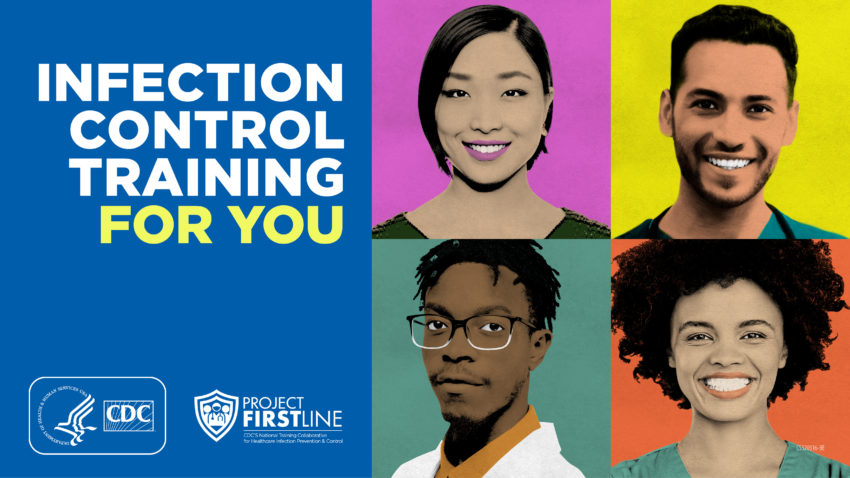
Share On Social!
COVID-19 worsened the many health disparities already facing people of color.
The pandemic revealed long-standing gaps in infection control knowledge and understanding among the frontline healthcare workforce.
This is why CDC launched Project Firstline, a training and education collaborative designed to ensure all healthcare workers, no matter their role or educational background, have the infection control knowledge and understanding they need and deserve to protect themselves, their patients, and their coworkers.
Salud America! at UT Health San Antonio is now working with the National Hispanic Medical Association to bring Project Firstline content to frontline healthcare workers to protect themselves, their facilities, and their patients (from Latino and all communities) from infectious disease threats.
“Healthcare teams in hospitals, nursing homes, and other care settings are the front lines against the spread of infection,” said Dr. Amelie G. Ramirez, director of Salud America! at UT Health San Antonio. “CDC’s Project Firstline is bolstering those efforts by developing evidence-based tools that can be delivered in a variety of ways to make infection control learning convenient and accessible for busy healthcare staff.”
What Is Project Firstline All About?
CDC’s Project Firstline aims to help health care providers improve infection control.
The initiative, launched in 2020, has brought together many healthcare-centric organizations—including Salud America! at UT Health San Antonio—to disseminate information about infection control to providers across the healthcare spectrum, including these areas:
- hospitals
- outpatient clinics
- dialysis centers
- nursing homes
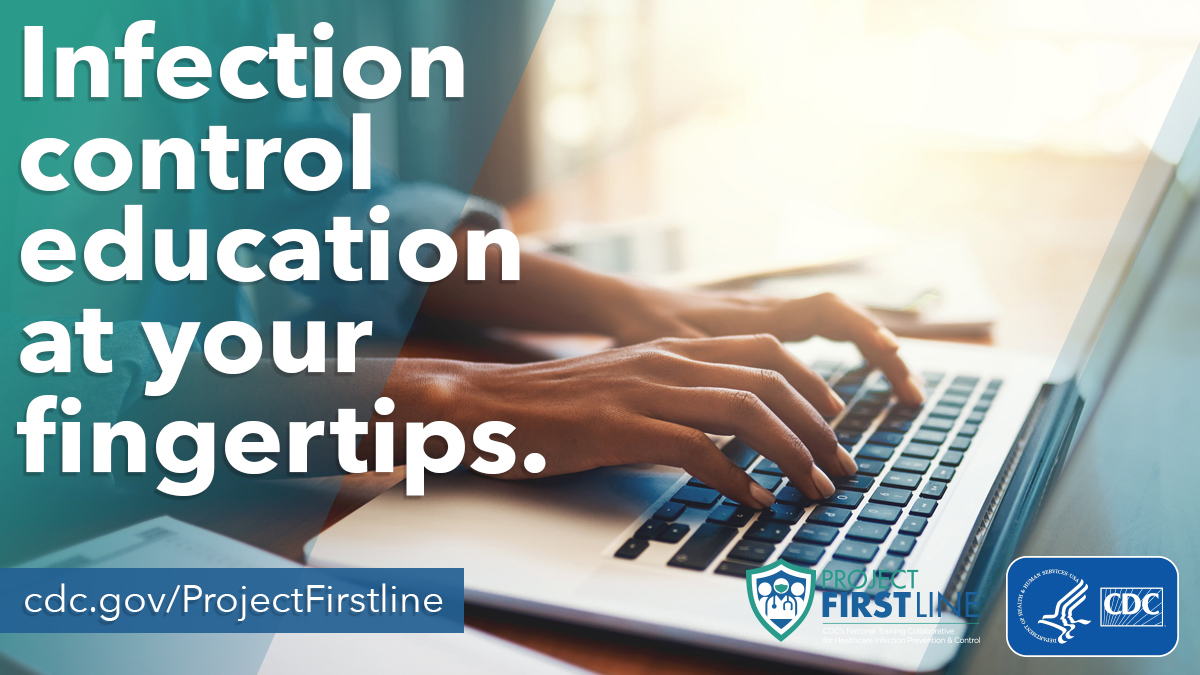 “Healthcare workers need and deserve clear and trustworthy information not only on CDC’s infection control recommendations, but also on the rationale and science behind them,” the CDC states.
“Healthcare workers need and deserve clear and trustworthy information not only on CDC’s infection control recommendations, but also on the rationale and science behind them,” the CDC states.
Project Firstline creates resources, including videos, facilitator toolkits that can help individuals to lead trainings even if they are not an infection control expert, and access to shareable images, web buttons, posters, and print materials.
“Project Firstline’s innovative content is designed so that—regardless of a health care worker’s previous training or educational background—they can understand and confidently apply the infection control principles and protocols necessary to protect themselves, their facility, their family and their community from infectious disease threats, such as COVID-19,” according to CDC’s website.
What Are the Three Goals of Project Firstline?
CDC’s Project Firstline has three main content goals.
- Empowerment
Core training. Deliver critical infection control information to address immediate training needs via products, methods, and platforms the healthcare workforce uses and prefers
Practical tools. Provide tools to help everyone working in a healthcare facility implement infection control protocols and procedures throughout their workday.
- Collaboration
Partner Engagement. Leverage trusted partners and channels across healthcare settings to ensure training content and tools meet the needs of and are delivered to the healthcare workers who need them.
Mentorship. Connect infection control experts with their local healthcare community so that they may become an ongoing resource.
- Lasting Results
Public Health Capacity. Provide tools and resources to the public health workforce to foster stronger relationships between the public health and the healthcare community to support more effective training on infection control.
Science to Practice. Conduct cutting-edge research to inform infection control recommendations and practices, and development of more effective and evidence-based platforms and approaches to infection control training and education that meet the needs of diverse learners across the healthcare community.
These strategies will go to help countless medical providers gain knowledge and understanding of infection control, which is critical moving forward, according to Dr. Michael Bell, the deputy director of CDC’s Division of Healthcare Quality Promotion, according to Infection Control Today.
“The challenge that infection control professionals face has grown tremendously,” he said. “We’re asking these individuals to not only be experts, but also to take responsibility for such a wide range of activities … and finding ways to help them accomplish what they’re doing across the whole population of healthcare personnel is the rationale behind Project Firstline.”
Why Is Infection Control So Important in Healthcare Settings?
Infection control in healthcare settings is important to prevent people from getting sick.
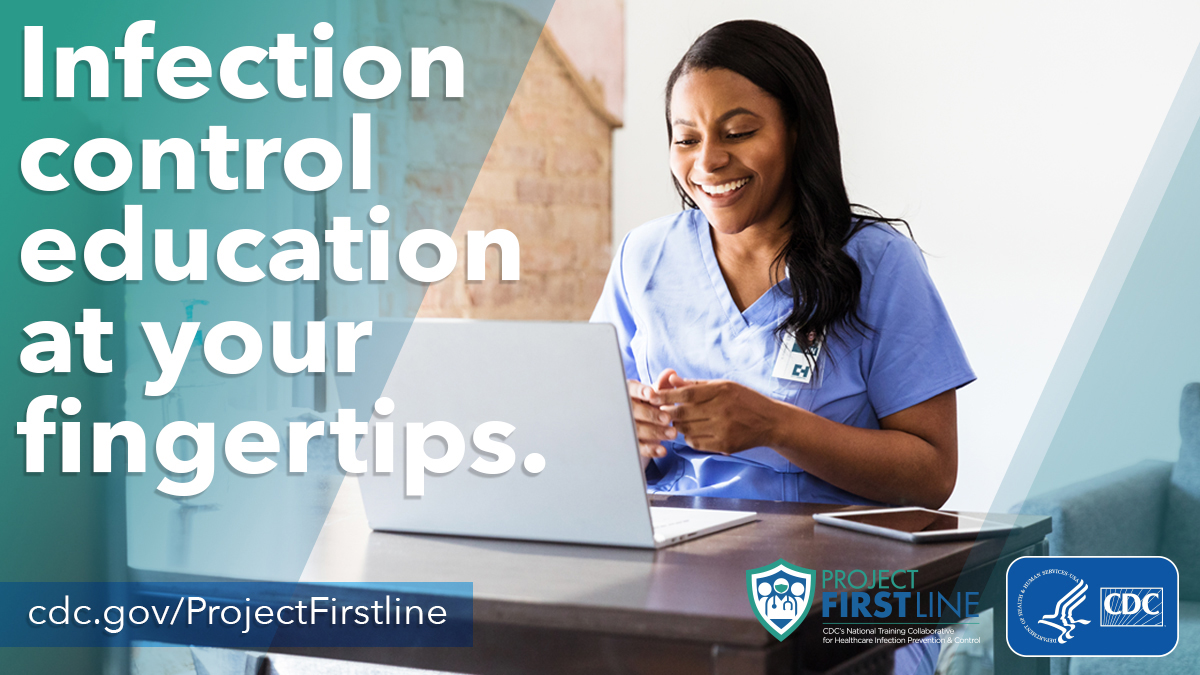 The best practices for infection control in healthcare can protect healthcare workers and their patients from infections while in a healthcare setting.
The best practices for infection control in healthcare can protect healthcare workers and their patients from infections while in a healthcare setting.
Now more than ever with the COVID-19 pandemic, keeping each other safe from the spread of infection is vital.
“CDC’s Project Firstline gives you the infection control knowledge you need to protect yourself, your patients, and your colleagues,” said Dr. Abigail Carlson, an Infectious Diseases physician with the CDC.
How Can Infection Control in Healthcare Settings Impact Latino Health?
The sad reality is Latinos face a heavy burden when it comes to infectious diseases.
That is why it is especially important to ensure healthcare workers are equipped to provide the safest care possible to Latinos and all people who come to receive care.
How Can You Contribute to Healthcare Infection Control?
CDC’s Project Firstline experts recommend that healthcare workers prevent the spread of COVID-19, an infectious disease, by:
- Cleaning your hands – soap and water and alcohol-based hand sanitizer break apart the envelope that holds the virus together, so it can’t spread.
- Creating good ventilation – good indoor ventilation is important for clearing air that might have respiratory droplets in it.
- Practicing physical distance – maintaining physical distance helps people avoid breathing in each other’s respiratory droplets.
- Using PPE appropriately – an N95 respirator will prevent you from breathing in virus that’s in respiratory droplets, and eye protection keeps respiratory droplets from landing on your eyes. Using gloves and gowns protects you. It also keeps you from accidentally spreading germs into your work environment.
- Source control: the use of respirators or well-fitting facemasks to cover a person’s mouth and nose prevents spread of respiratory secretions when they are breathing, talking, sneezing, or coughing. Source control is currently recommended for everyone in a healthcare setting.
- Vaccination is another important way to prevent the spread of infectious diseases.
Learn more about infection control and training opportunities at Project Firstline.
How You Can Help Address the Underlying Systemic Inequities Behind Health Disparities?
Health equity is where everyone has a fair, just opportunity to be their healthiest.
Latinos face health disparities in cancer, diabetes, and infectious diseases due to systemic and structural inequities in the areas of income, lack of access to healthcare, healthcare system equity (which includes infection control), healthy food, quality housing and green spaces.
“Everyone should be able to access healthcare where staff know and use infection control best practices to keep patients, visitors, and colleagues safe,” said Dr. Amelie G. Ramirez, director of Salud America! at UT Health San Antonio.
You can take action for systemic change for health equity.
Select your county name and get a Health Equity Report Card by Salud America! You will see how your area stacks up in access to health care, housing, transit, and other health equity issues. These compare to the rest of your state and nation.
You can email your Health Equity Report Card to local leaders. Share it on social media. Use it to make a case for community change to boost health equity!
Editor’s Note: This article is part of a collaboration between Salud America!, the National Hispanic Medical Association, and the CDC’s Project Firstline. To find resources training materials, and other tools to bolster knowledge and practice of infection control, visit Project Firstline.
By The Numbers
142
Percent
Expected rise in Latino cancer cases in coming years

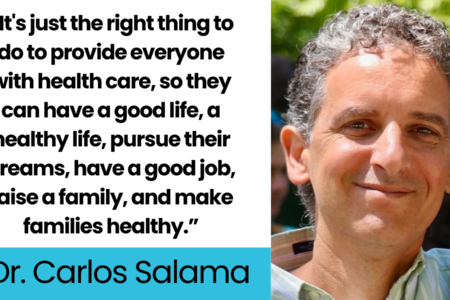

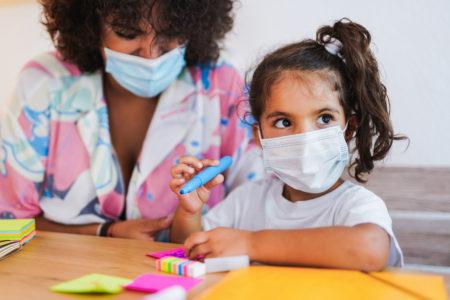
[…] The pandemic is another chapter in the bitter story of American racism and inequality. Black and Latinx people are being infected and are dying at much higher rates than white Americans. Many people of […]
[…] coronavirus has killed over 61,000 Latinos in America according to the CDC, accounting for over 18.2% of the total COVID deaths in the […]
[…] Whereas Hispanics make up 11% of D.C.’s inhabitants, they signify 19% of the COVID cases, and 14% of the deaths. Equally, 46% of D.C.’s residents are Black, they usually make up an alarming 75% […]
[…] and historical mistreatment. According to the U.S. Centers for Disease Control and Prevention, Latino and Black American communities are three times more likely to become infected with […]
[…] Covid pandemic has hit the Latino community particularly hard, and data from the nonprofit health equity advocacy group Salud America! shows Latinos lead in the 0-24 age […]
[…] the pandemic, Latinos took major blows, both in terms of COVID-19 cases and also from the economic recession under former President Donald Trump. Nearly half (49%) of […]
[…] the positive trend, the harm may have already been done. The pandemic has disproportionately impacted Latino communities. Reuters reported that election-related or political disinformation that […]
[…] pesar de la tendencia positiva, es posible que el daño ya esté hecho. La pandemia ha impactado desproporcionadamente Comunidades latinas. Reuters informó que la desinformación política o relacionada con las […]
[…] residentes blancos muestran una tasa mucho más baja con 10 muertes por cada 100,000 habitantes(8 9) . Los afroestadounidenses por su parte, denuncian subsistemas de salud que les segregan […]
[…] https://salud-america.org/coronavirus-case-rates-and-death-rates-for-latinos-in-the-united-states/ […]
[…] https://salud-america.org/coronavirus-case-rates-and-death-rates-for-latinos-in-the-united-states/ […]
[…] communities have the second-highest number of COVID-19 cases in the U.S. They’re also more likely to become hospitalized and die from the disease than other […]
[…] total, around 160,000 Latinos were killed by COVID-19. This accounts for 16% of the 1 million deaths in the country. The […]